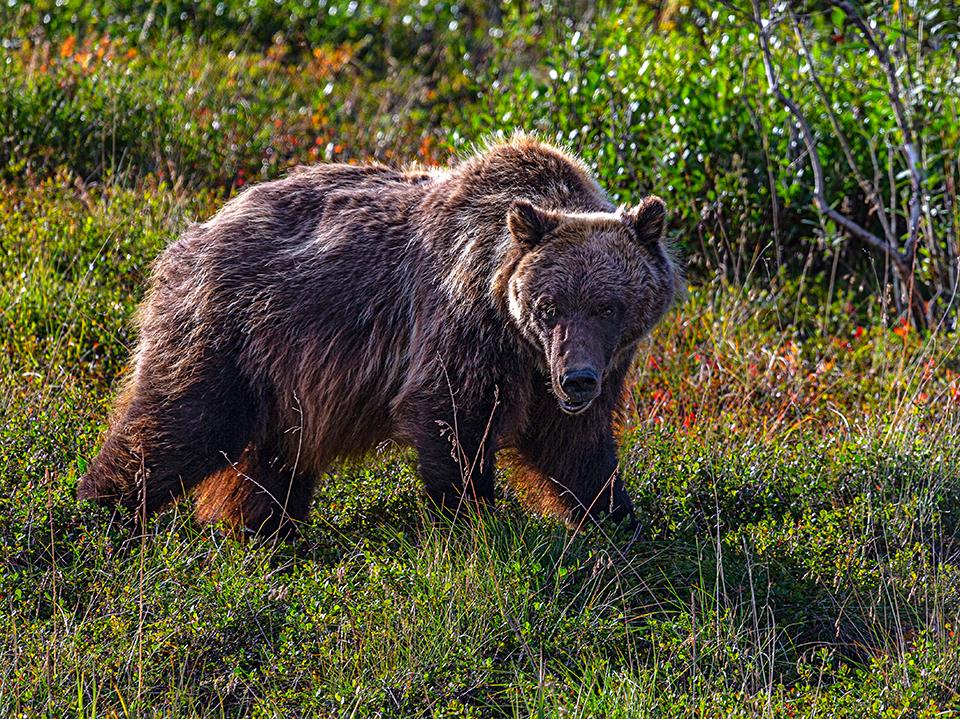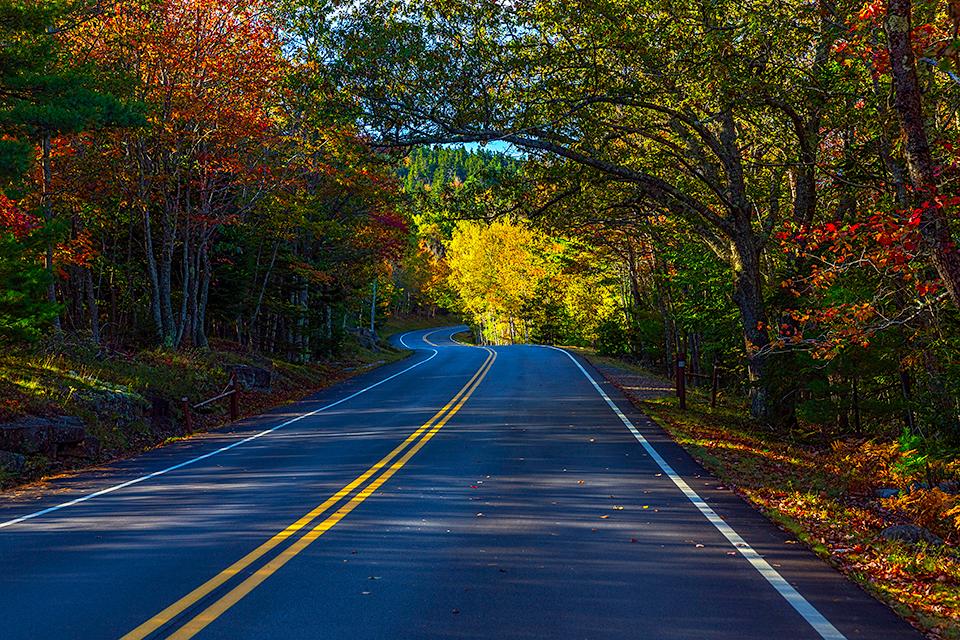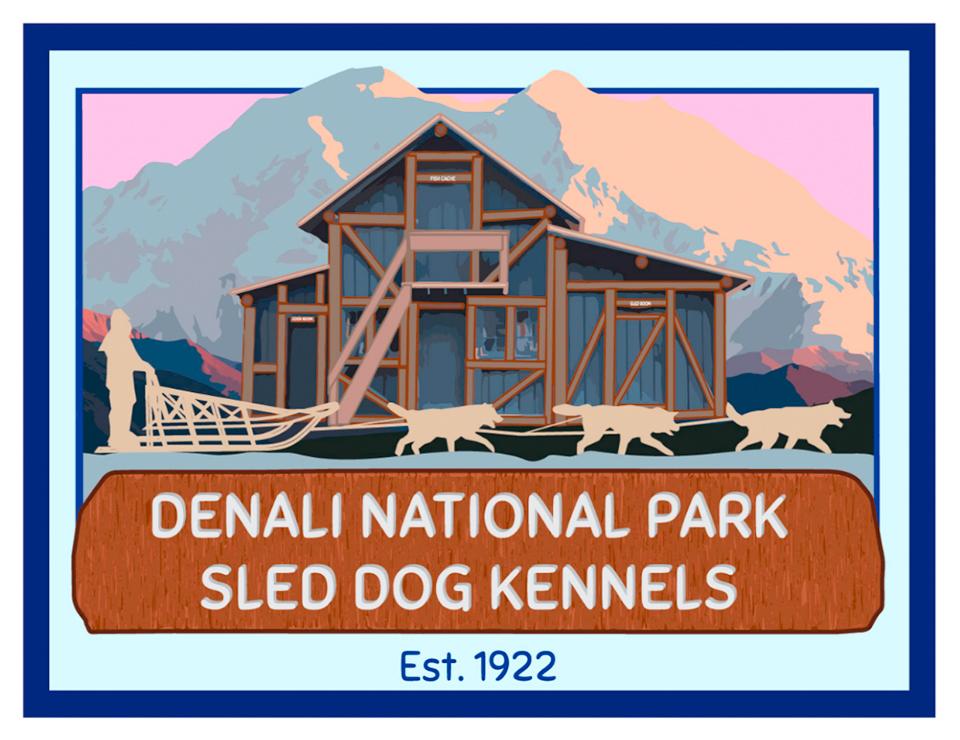
An inland wetland area at Indiana Dunes National Park / NPS-Katy KellerLynn
What’s notable about February is that there are so many parks which were established that month: Indiana Dunes, Gateway Arch, Acadia, Denali, Grand Canyon, and Grand Teton national parks. Test your knowledge about these national parks with this quiz, check out the trivia, and maybe learn a little something you didn't know before.
1. True or False: Indiana Dunes National Park is the most biodiverse park unit in the National Park System?
a) True
b) False

Old Courthouse and Gateway Arch, Gateway Arch National Park / NPS - Sue Ford
2. True or False: Gateway Arch is 70 stories tall.
a) True
b) False

A leaf-strewn carriage road, Acadia National Park / Rebecca Latson
3. As you walk along Acadia National Park’s carriage roads, you’ll notice large blocks of granite lining the roads that serve as guardrails. These rough, irregularly spaced stones, affectionately called "Rockefeller’s Teeth,” are known as ___.
a) Coping stones
b) Broken stones
c) Cobble stones
d) Trail stones

A grizzly seen from the bus window at Denali National Park and Preserve / Rebecca Latson
4. The “Big Five” of wildlife at Denali National Park and Preserve are moose, caribou, wolves, grizzly bears, and ___.
a) Mountain goats
b) Dall sheep
c) Elk
d) Pronghorn

A sales room circa 1905, Grand Canyon National Park / National Park Service
5. The oldest family-owned concession in the entire National Park System is found in Grand Canyon National Park: _____
a) Kolb Brothers Studio
b) Verkamps Curios
c) Colters Lookout Studio
d) Hance Trail Guides

A home where the bison roam, Grand Teton National Park / Rebecca Latson
6. While Grand Teton, with an elevation of 13,775 feet (4,198 m) is the highest peak in Grand Teton National Park, there are ___ other peaks in the park with elevations over 12,000 feet (3,658 m).
a) two
b) four
c) six
d) eight
7. Believe it or not, there are caves hidden in Grand Canyon National Park. Out of an estimated 1,000 caves, ___ have actually been recorded.
a) 137
b) 223
c) 335
d) 477
8. True or false: there are three species of venomous snakes living in Grand Teton National Park.
a) True
b) False
9. The Gateway Arch is a memorial to ______’s role in opening the West.
a) Meriwether Lewis
b) William Clark
c) John Adams
d) Thomas Jefferson
10. Indiana Dunes National Park provides habitat for approximately _____ native vascular plants.
a) 1,130
b) 3,210
c) 6,580
d) 2,450
Trivia

The park loop road, Acadia National Park / Rebecca Latson
"Acadia’s motor road system was constructed over a 36 year period. The planning and design were not without challenges resulting from a difficult topography, private and public land ownership, economic verses conservation interests, and the financial constraints brought on by the Great Depression and World War II.
Non-contiguous segments of the motor road system were built from 1922 to 1958, providing work for both locals and those in the Civilian Conservation Corps (CCC) during the 1930s and 1940s respectively. In total, the system was completed in eighteen different phases: sixteen of them on the eastern side of Mount Desert Island (twelve segments making up the Park Loop Road and four spurs that connect to it) and two segments making up the Schoodic Loop Road on Schoodic Peninsula." To read more about the history of Acadia’s motor roads, click here.

A November sunset at Portage Lakefront & Riverwalk, Indiana Dunes National Park / National Park Service
“Recreational development of the Indiana Dunes began in the late nineteenth century. By the early 1900s, development was concentrated in three areas: the Michigan City lakefront; Porter Beach and Waverly Beach (now Indiana Dunes State Park); and Miller (now in east Gary). Increases in disposable income and leisure time combined with improved transportation brought people to the Indiana Dunes to enjoy bathing in Lake Michigan and other lakefront diversions. Chicagoans in particular came to the Indiana Dunes. The Chicago-based Prairie Club incorporated in 1911 built a beach house for members in 1913. Prairie Club members and other beachgoers erected tents and rough wooden cottages for housing during their summers in the dunes. This early residential development had minor impact compared to industrial sand mining that was destroying large areas of duneland. Alarmed by this destruction and by steel company land purchases, Prairie Club members and others began a campaign to create Sand Dunes National Park. Despite extensive publicity and advocates including Stephen Mather, first director of the National Park Service in 1916, the effort was not immediately successful.” To read more about early development of the Indiana Dunes, click here.

The Kennels Centennial, Denali National Park and Preserve / National Park Service
“The Kennels Centennial is underway. For one hundred years, the Denali Sled Dog Kennels, located within Denali National Park and Preserve, has been the only sled dog kennel in the National Park Service and one of the oldest sled dog kennels in the country. But the operation is so much more. While the role of the kennels has evolved over time, human and canine rangers have worked together since 1922 to uphold the tradition of preserving the park’s vast wilderness by dog team. Denali’s dogs are authentic working dogs of the sort previously common across Alaska, when people relied on their dogs for winter transportation and work. They continue to haul materials in Denali’s two million acres of federally designated wilderness area. In fact, one observing Denali’s human and canine rangers out on patrol might think little time has passed since the days when Harry Karstens patrolled the park by dog team. The kennels continue to embrace what works best for this land and share the region’s rich mushing history with visitors. By upholding tradition, the kennels are informed and empowered—not restricted—by the past. In a time when the majority of Alaskan Huskies are racing dogs and our wilderness areas are increasingly fragile, the Denali Kennels exist to preserve a unique tradition in a special place—and that’s worth celebrating.” To read more about the kennels and find out when and what events are being celebrated, click here.
Quiz Answers
1b False
Actually, Indiana Dunes National Park is the fourth most biodiverse park unit within the National Park System, after Great Smoky Mountains National Park, Grand Canyon National Park, and Yosemite National Park. To read more FAQs about this 61st national park, click here.
2b False
“Allowing 10 feet for every story, the Arch is exactly 63 stories tall.” To read more FAQs about Gateway Arch National Park, click here.
3a
Coping stones are “large blocks of granite lining the roads serve as guardrails. Cut roughly and spaced irregularly, the coping stones create a rustic appearance.” To read more about Acadia’s carriage roads and gatehouses, click here.
4b
For many visitors adventuring to the park, a major goal is to see wildlife. Scientists have documented 39 species of mammals in Denali, but it is the five largest mammals that capture visitors’ imaginations: moose, caribou, Dall sheep, wolves and grizzly bears.
5b
In 2006, Verkamp’s Curio Store celebrated its 100th anniversary making it the oldest family-owned concession in the entire National Park System. The National Park Service bought the store in 2008 and opened it as a visitor center. To read more about Grand Canyon’s entrepreneurs, click here.
6d
In addition to Grand Teton, there are eight more peaks that exceed 12,000 feet in height.
7c
Out of the estimated 1,000 caves within Grand Canyon National Park, 335 caves have been recorded. FYI: “under the current park policy, all caves are currently closed to visitation, except for research purposes.” To learn more about karst systems and cave monitoring in this national park, click here.
8b False
There are three species of snakes in Grand Teton National Park, but none of them are venomous.
9d
“The Gateway Arch reflects St. Louis' role in the Westward Expansion of the United States during the nineteenth century. The park is a memorial to Thomas Jefferson's role in opening the West …”
10a
“Indiana Dunes National Park provides habitat for approximately 1,130 native vascular plants, including the federally threatened Pitcher’s thistle.”
References
In addition to the information from each NPS.gov park website, I used the following references.
https://www.doi.gov/blog/9-things-you-didnt-know-about-denali-national-park-and-preserve
https://www.nationalparked.com/grand-teton
https://www.doi.gov/blog/13-things-you-didnt-know-about-grand-canyon-national-park
Note: Different websites may have different national park establishment dates, so, I used this NPS publication as the standard.



Add comment